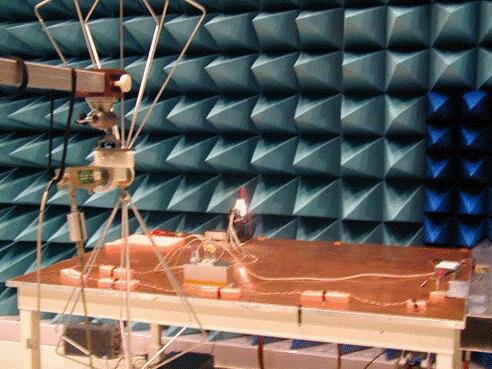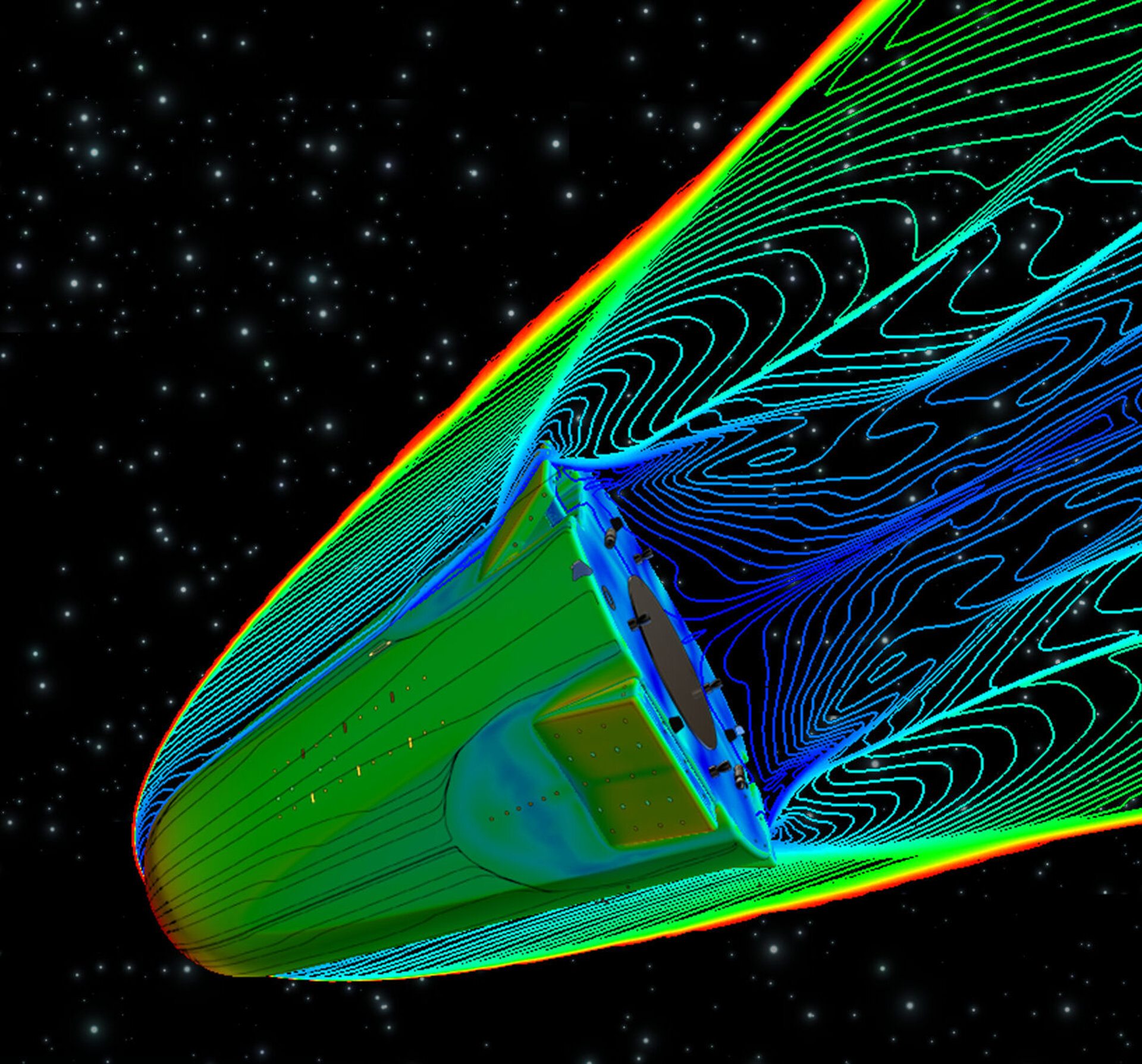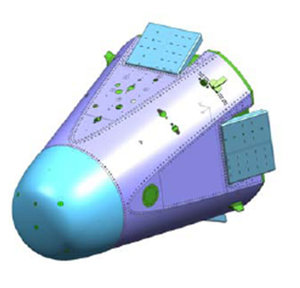Expert payloads pass final EMC testing milestone
Payloads destined for an ambitious ESA hypersonic reentry mission scheduled for launch in late 2010 have concluded their final round of electromagnetic compatibility testing.
Flight models of European Experimental Reentry Testbed (Expert) payloads underwent extensive electromagnetic compatibility (EMC) testing from June to October in ESA’s Maxwell facility at ESTEC. This followed previous vibration, shock and thermal–vacuum testing, replicating the conditions expected during Expert’s short but violent working life.
Spacecraft returning to Earth pass through a harsh environment: plunging into the atmosphere at hypersonic speeds involves wild turbulence and extreme temperatures as friction heats surrounding air to form a shroud of blowtorch-like plasma. Europe does not have atmospheric reentry capability but Expert is a ballistic test capsule intended to support future research and development in this area, gathering a wide range of flight data as it falls back to Earth.

EMC testing took place on all ‘intelligent’ Expert payloads, meaning those incorporating data acquisition units, linked via serial link to the main computer. This is a set of thermal radiation-measuring pyrometers for measuring the temperature of Expert’s thermal protection system, and another devoted to gas-surface interaction and catalytic high-temperature chemical reactions; side flap instrumentation; an infrared camera and a spectrometer to characterise the chemistry of reentry plasma.
The testing ensured that all these payloads can operate together without electromagnetic interference, surges or potentially disruptive static charging. Maxwell’s test chamber isolates items from external electromagnetic influences while its absorbent anechoic walls prevent EM reflection.

Flight model EMC testing followed on from initial qualification model testing the previous year. These are replicas built expressly for greater stress testing than flight models can safely endure.
“EMC is a vital part of environmental testing, ensuring that the payloads are not susceptible to the electromagnetic environment of Expert and also, at the same time, they are adversely affecting each other,” said Nick Panagiotopoulos, Expert’s avionics engineer.

“Expert will only fly for about 15 minutes in total, and these payloads will only be gathering data for two and a half minutes during the reentry,” explained Jan Thoemel, Expert payloads procurement engineer. “But our aim is to ensure these results will be as high-quality as possible. They will serve to calibrate European plasma wind tunnels and computational fluid dynamics simulations for future aerothermodynamics research: any error at this stage would therefore be magnified later."

As well as the payloads under test, Expert will carry 14 systems in total, mostly temperature and pressure sensors linked directly to the vehicle’s main computer, all packed within a blunt-nosed capsule with side flaps that measures 1.6 m high by a maximum 1.1 m in diameter.
The payloads will be delivered to prime contractor Alenia for integration with the space vehicle, with launch scheduled for late 2010.















 Germany
Germany
 Austria
Austria
 Belgium
Belgium
 Denmark
Denmark
 Spain
Spain
 Estonia
Estonia
 Finland
Finland
 France
France
 Greece
Greece
 Hungary
Hungary
 Ireland
Ireland
 Italy
Italy
 Luxembourg
Luxembourg
 Norway
Norway
 The Netherlands
The Netherlands
 Poland
Poland
 Portugal
Portugal
 Czechia
Czechia
 Romania
Romania
 United Kingdom
United Kingdom
 Slovenia
Slovenia
 Sweden
Sweden
 Switzerland
Switzerland




























